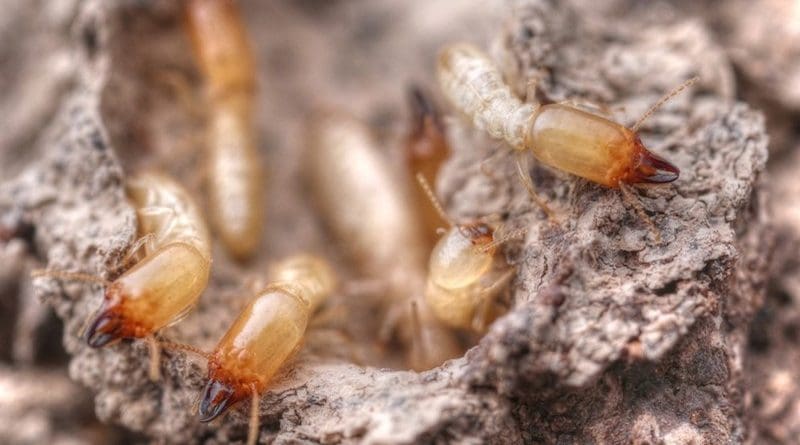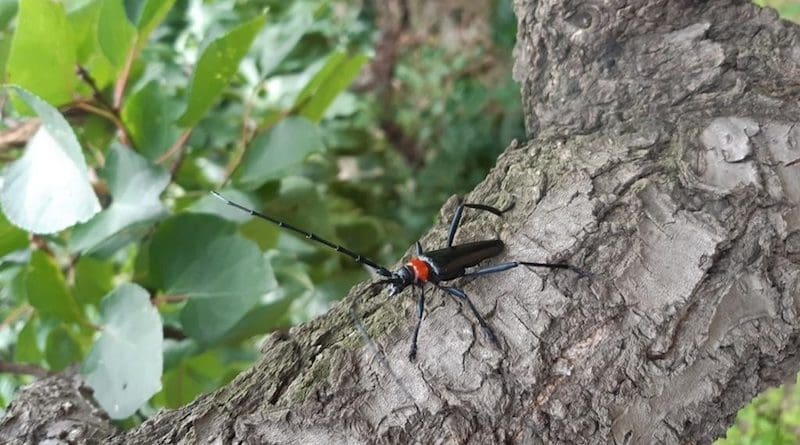
Invasive Termites Dining In Our Homes: Soon A Reality In Most Cities
With climate change continuing its relentless march, the world faces not only rising temperatures and extreme weather, but also an insidious threat to our homes: invasive termites. And the bill could be steep – invasive termites currently cost over 40 billion USD annually.
In a new study published in the open-access journal Neobiota, PhD student Edouard Duquesne and Professor Denis Fournier from the Evolutionary Biology & Ecology lab (Université libre de Bruxelles) unveil the unsettling reality of invasive termites’ potential expansion into new territories.
Their research reveals that as temperatures rise and climate patterns shift, cities worldwide, from tropical hotspots like Miami, Sao Paulo, Lagos, Jakarta or Darwin to temperate metropolises like Paris, Brussels, London, New York or Tokyo, could soon find themselves under siege by these tiny yet destructive pests.
But how do termites, typically associated with tropical climates, find their way into cities far beyond their natural habitat? The answer lies in the interconnectedness of our modern world. Urbanisation, with its dense populations and bustling trade networks, provides the perfect breeding ground for termite invasions.
Moreover, the global movement of goods, including wooden furniture transported by private vessels, offers unsuspecting pathways for these silent invaders to hitch a ride into our homes.
“A solitary termite colony, nestled within a small piece of wood, could clandestinely voyage from the West Indies to your Cannes apartment. It might lurk within furniture aboard a yacht moored at the Cannes Film Festival marina,” say the researchers.
“Mating is coming. Termite queens and kings, attracted by lights, may initiate reproduction, laying the groundwork for new colonies to conquer dry land,” they continue.
Duquesne and Fournier’s research emphasises the need for a paradigm shift in how we approach invasive species modelling. By integrating connectivity variables like trade, transport, and population density, their study highlights the importance of understanding the intricate interactions that facilitate termite spread.
In light of these findings, the researchers urge swift action from policymakers and citizens alike. Major cities, regardless of their climate zone, must implement strict termite control measures to protect homes and infrastructure.
“Citizens can play a crucial role by leveraging technology, such as AI-assisted apps like iNaturalist, to detect and report potential termite sightings, turning ordinary residents into vigilant guardians of their environment,” say the researchers.
“As we confront the challenges of a rapidly changing climate, awareness and proactive measures are our best defence against the creeping menace of invasive termites,” they conclude.
Workers and soldiers of the invasive termite Reticulitermes. Credit: David Mora (https://www.pasiontermitas.com/). CC-BY4.0

Study Explores Biology, Impact, Management And Potential Distribution Of Destructive Longhorn Beetle
A new study, published in the Journal of Pest Science, explores the biology, impact, management, and potential distribution of the invasive, red-necked longhorn beetle (Aromia bungii) which has recently invaded Japan, Germany, and Italy.
The review is mainly based on Chinese literature and intended to reveal the rather concealed but present knowledge to a wider audience, especially for those countries that were recently invaded or are at threat to be invaded.
The insect is regarded as one of the most destructive longhorn beetle pests of fruit trees in lowland areas of China where economic losses to Prunus species, such as apricot and peach, can be substantial and threaten economic development and food security.
In Italy, the UK Department for Environment, Food & Rural Affairs (Defra) states, Aromia bungii has severely damaged or killed several hundred apricot, cherry and plum trees that have succumbed to larval attack that leads them to become more susceptible to disease.
Aromia bungii is native to the south-eastern Palaearctic and Oriental regions. It is recorded from China, Japan, Mongolia, North Korea, Taiwan, Vietnam, and the Russian far East.
Sustainable control tools are needed
Scientists from the MARA-CABI Joint Laboratory for Biosafety and European Laboratory joined colleagues from Agriculture and Agri-Food Canada, Agroscope and the Institute of Plant Protection, Chinese Academy of Agricultural Sciences (CAAS) on the study which highlights that sustainable control tools are needed for the management of this emerging pest.
The study further demonstrates the great international, intercontinental collaboration for this review involving scientists from China, Switzerland, Italy, Germany, and Canada.
Dr Tim Haye, Head Arthropod Biological Control at CABI, and an author of the paper, said, “The pest exhibits an adaptable lifecycle, a high reproductive output, and the larvae live concealed under the bark of invested trees, which are traits that promote its invasiveness.
“Detection and monitoring of A. bungii currently rely upon visual identification of infested trees that are usually already damaged, which is inefficient and not target-specific.”
Dr Haye said current control methods rely upon the labour-intensive physical removal of infested trees. Although native parasitoid natural enemies of A. bungii provide control in Chinese orchards, none are appropriate for classical biological control in invaded areas due to biosafety concerns surrounding their broad host ranges. However, entomopathogenic fungi and nematodes may provide viable options for biological control in invaded ranges.
Targeted natural enemy surveys
Dr Jinping Zhang, of the MARA-CABI Joint Laboratory for Biosafety, said, “Recent advancements in semiochemical baited traps may provide sustainable, target-specific, and efficacious methods to monitor and control A. bungii.
“There remains much to learn about the biology and control of A. bungii, and continued advancements in the study of sustainable control tools are needed for the management of this emerging pest.”
The scientists argue that classical biological control against A. bungii may not be viable due to biosafety risks, but targeted natural enemy surveys would provide greater clarity on the potential for this approach.
Dr Haye added, “This review ultimately provides a source of reference for A. bungii that can be used by scientists, regulatory agencies, and industry to direct future research and implementation of management options.”
Aromia bungii is regarded as one of the most destructive longhorn beetle pests of fruit trees (Credit: Tim Haye).
No comments:
Post a Comment